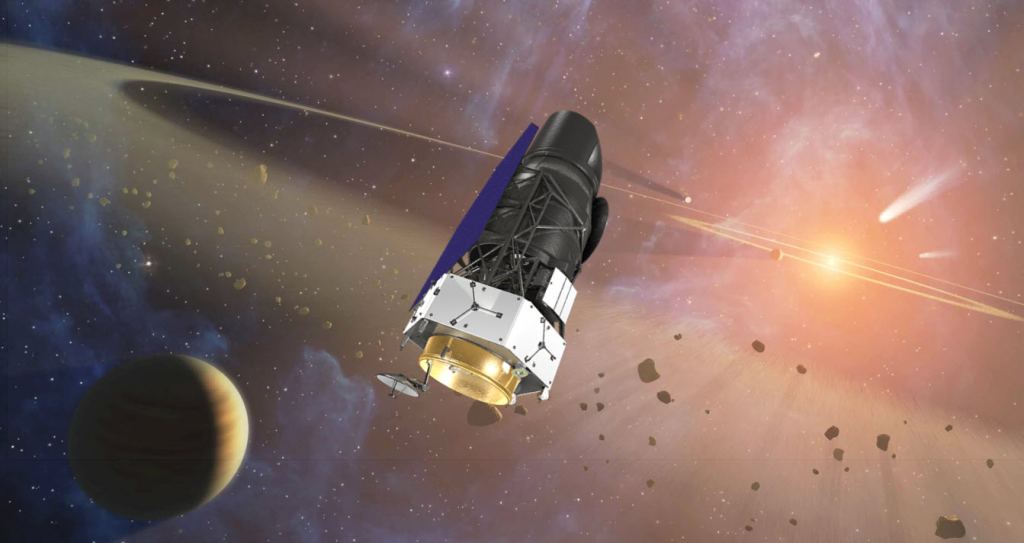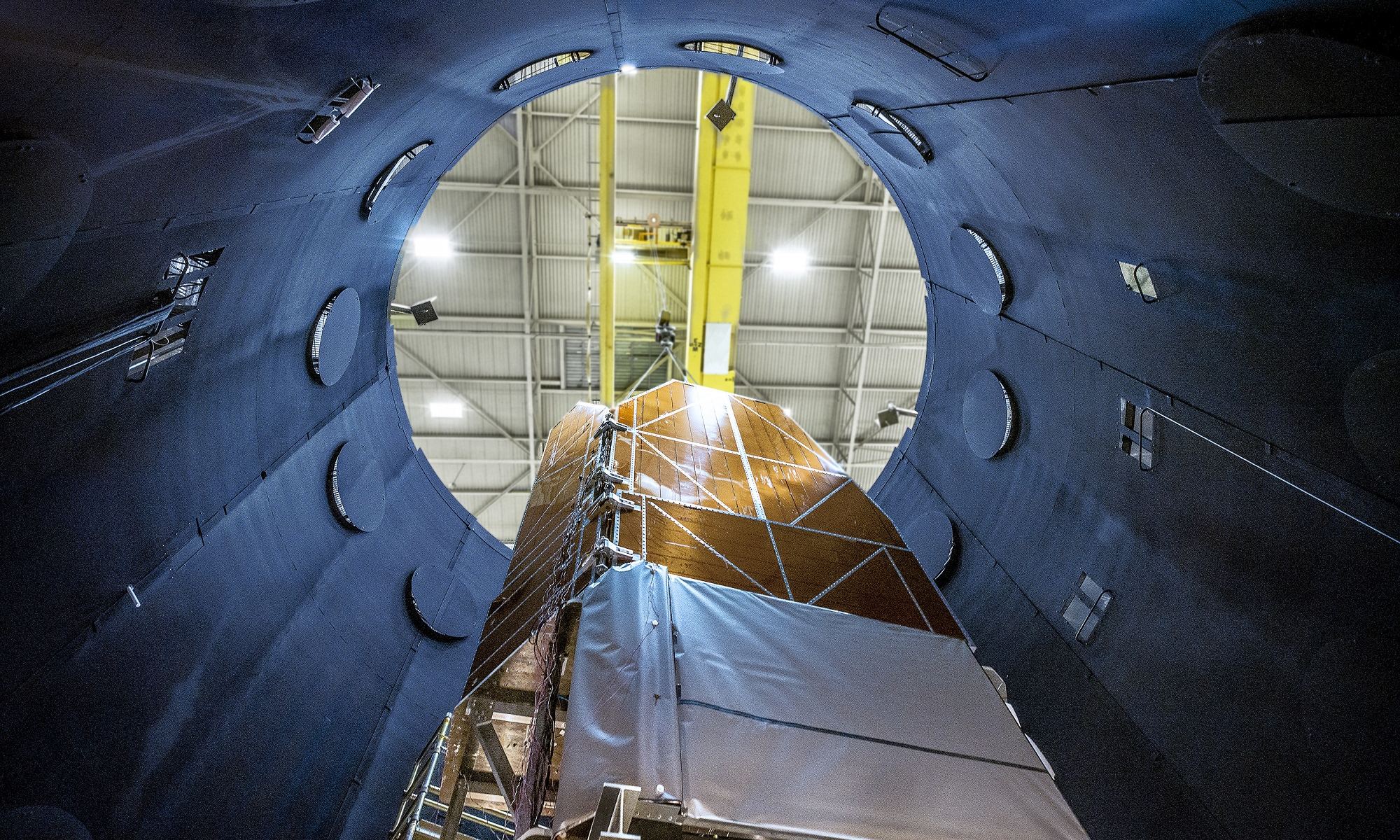By 2027, the Nancy Grace Roman Space Telescope – or Roman Space Telescope (RST), for short – will take to space and build on the legacy of the venerable Hubble Space Telescope (HST). Combing a large primary mirror, a camera as sensitive as its predecessors, and next-generation surveying capabilities, Roman will have the power of “One-Hundred Hubbles.” It’s little wonder then why the telescope is named after Dr. Roman (1925 – 2018), NASA’s first Chief Astronomer and the “Mother of Hubble.”
As part of its journey towards realization, this next-generation space telescope recently passed a crucial milestone. This would be the all-important Mission Critical Design Review (CDR), signaling that all design and developmental engineering work is complete. With this milestone reached, the next-generation space telescope is now ready to move from the conceptual stage into the fabrication and assembly phase.
News of this milestone was first shared by B. Scott Gaudi, a Professor with the Department of Astronomy of the Ohio State Unversity (OSU), on Sept. 28th via Twitter. Before rejoining the Dept. of Astronomy at OSU (where he earned his graduate degree), Gaudi was a Menzel postdoctoral fellow with the Theoretical Astrophysics Division at the Harvard-Smithsonian Center for Astrophysics (CfA), a Hubble Fellow, and a member of the Institute for Advanced Study.
“I’m excited to share that the Nancy Grace Roman Space Telescope @NASARoman just passed its Mission Critical Design Review,” tweeted Gaudi. “This is a very important milestone for Roman. It’s the culmination of 5.5 years of effort since Roman became an ‘official’ @NASA project in Feb 2016.”
This external review comes after engineers at NASA’s Goddard Space Flight Center completed their review of the RST and were satisfied that it can proceed to the next phase, including full-scale fabrication, assembly, integration, and testing. The completion of the Mission CDR is also critical to securing Congressional approval for funding, without which no mission can proceed through development. As Julie McEnery, the RST senior project scientist at NASA Goddard described it all in a recent NASA press statement:
“After seeing our extensive hardware testing and sophisticated modeling, an independent review panel has confirmed that the observatory we have designed will work. We know what it will look like and what it will be capable of. Now that the groundwork is laid, the team is thrilled to continue building and testing the observatory they’ve envisaged.”
The RST is part of a handful of proposed observatories that will take over from NASA’s Great Observatories, which include the venerable Hubble Space Telescope (HST), the Spitzer Space Telescope (SST), the Chandra X-ray Observatory, and the Compton Gamma-Ray Observatory (CGRO). Once it is operational, the RST will peer across vast stretches of space and time to survey the infrared Universe, measure the influence of Dark Matter and Dark Energy, and discover countless astronomical objects.

The original concepts for the RST were introduced between 2009 and 2010 as part of the Astro2010 Decadal Survey. In response to requests from different Decadal panels, researchers proposed several ideas for a next-generation large mission, like the Near-Infrared Sky Surveyor (NISS), the Microlensing Planet Finder (MPF), and the Joint Dark Energy Mission (JDEM)/Omega. In 2016, these concepts were folded over into a single proposal, known as the Wide-Field Infrared Survey Telescope (WFIRST).
In May of 2020, coinciding with the thirtieth anniversary of the HST, NASA chose to rename the WFIRST after Nancy Grace Roman. During the 1960s, Roman was the first Chief of Astronomy in NASA’s Office of Space Science, advocating tirelessly for NASA programs and women in the STEAM fields. In the mid-1960s, she established a committee of astronomers and engineers to envision a space telescope capable of accomplishing multiple scientific missions.
Her efforts were realized in 1990 with the launch of Hubble, which would lead to a revolution in astronomy. These efforts and accomplishments are what led to the nickname “the Mother of Hubble.” Since this telescope is the direct successor to the HST (but with far greater surveying power), Dr. Nancy Grace Roman was the natural choice when NASA decided to give the WFIRST a proper name.
As Gaudi explained, all NASA missions need to undergo multiple critical design reviews, but the most important is the Mission CDR. This review is intended to evaluate if “the design is essentially complete and ready to move into fabrication/assembly phase.” or “Yup, this will work, start building!” In the case of the RST, the review required six days, as the hundreds of engineers and technicians involved presented over 1800 charts and volumes of data on the design.
Said Jackie Townsend, deputy project manager for the Roman Space Telescope at NASA Goddard:
“With this review complete, we enter the exciting phase where we will assemble and test the Roman hardware that we plan to fly. When all our flight hardware is ready in 2024, we’ll hold the System Integration Review and integrate the Roman observatory. Finally, we’ll test the whole observatory in environments that simulate launch and our orbit to make sure Roman will work as designed.” The mission is slated to launch no later than May 2027.”
With the same resolution as Hubble in the infrared band and a field of view 200 times larger, Roman will accomplish what it would take Hubble centuries to do in five years. It will map thousands of exoplanets, millions of galaxies, billions of stars and track the formation and evolution of large cosmic structures. It is also expected to play a major role in completing the census of exoplanets, including rocky planets that orbit within their star’s circumsolar habitable zones (aka. “Earth-like” planets).
By observing the Universe from its earliest epochs, Roman will also help shine a light on Dark Matter and Dark Energy. Whereas Dark Matter accounts for 85% of the Universe’s mass (as opposed to “luminous,” or normal, matter), Dark Energy is the elusive force that is believed to be responsible for how cosmic expansion is accelerating. Together, they comprise 95% of the total mass-energy content of the Universe.
By watching cosmic evolution unfold over the past ~13.8 billion years, astronomers hope to observe how these forces affected that evolution. On top of that, Roman will work in tandem with other next-generation observatories, like the James Webb Space Telescope (which is scheduled to launch in November). While Roman will identify new objects, planets, stars, and galaxies, James Webb will conduct follow-up observations with its advanced IR suite.
Another revolution in astronomy will take place in the coming years. With Roman‘s mission CDR complete, we are another step closer to seeing it unfold!
Further Reading: NASA

